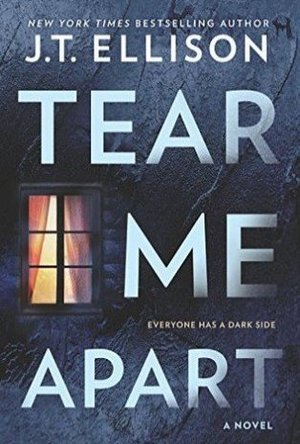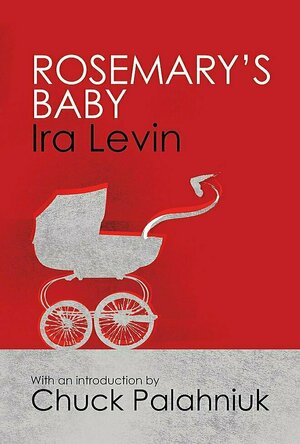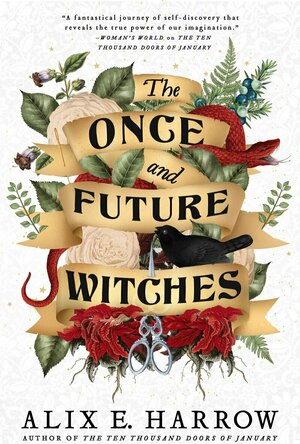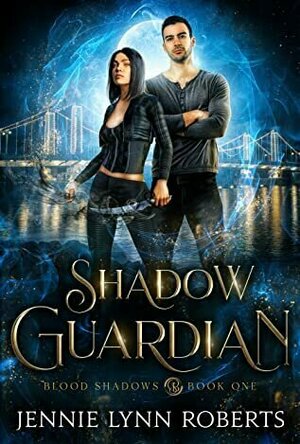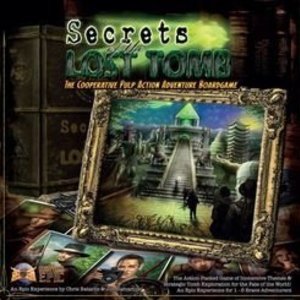Search
Search results
Debbiereadsbook (1611 KP) rated Shadow Seer (Blood Shadows #2) in Books
Nov 29, 2022
you must read book one first!
Independent reviewer for Book Sirens, I was gifted my copy of this book.
This is book 2 in the Blood Shadows trilogy, and you really must: MUST read book one, Shadow Guardian bfore you read this. That book sets the scene and tone for this book. And cos, you know, I said so!
Zach needs to trust Emma, but given who her father is, he's not sure he can. But his Shadows? They know. They know that Emma can be trusted. They know that Emma is Zach's. He just needs to get with their programme, which is difficult, since he can see her Shadows, and how damaged they are. Emma can't see they Shadows, but she knows hers are broken. She wants nothing to do with her father. But Zach and the others need her help. She's just not sure she has the skills they need.
What I'm especially enjoying about these books is this: I cannot see where it's going! I really can't see how they are gonna get out of this mess that Gordon has created, without some major damage to both the Shadow Weavers and the norms of this world. It's frustrating, in the best way!
Zach, bless him, he was hurt bad by James' betrayal in the first book and he takes a lot of it out on Emma in the beginning. But once he sees Emma, really SEES her, he can see he is hurting her too. And then what does he do?? Breaks her freaking heart by hurting her some more! Oh he does come good, in the best way, he really does, but he still hurt Emma.
Emma is hurting for a whole other reason. He father is hell bent on world domination, and she wants nothing to do with him, but it might be the only way they can stop him. While there, Emma discovers some truths, some SPOILERS that will not be discussed!
I loved the description of the colours of Zach and Emma's Shadows. They make you look at the shadow on the wall behind the lamp, at the shadow the cat makes when she walks past the sun, and think. It makes you see if you can see the colours in those shadows.
We get a bit of Gordon here, too. He is the one bent on world domination and his plan is coming together. Until Emma and Zach mess that up, but he can still make it work. (I love hearing from the bad guy!)
James, oh James! He is in a world of hurt, he really is. He knows that he was used by Gordon, he knows that he caused a good deal of pain to those he loves, but he can't see his way out this mess. Until Riley turns up, and then James goes and does something incredibly stoopid and now we need his story, like yesterday!!
So, yeah, loved it, as much as book one!
5 stars
*same worded review will appear elsewhere
This is book 2 in the Blood Shadows trilogy, and you really must: MUST read book one, Shadow Guardian bfore you read this. That book sets the scene and tone for this book. And cos, you know, I said so!
Zach needs to trust Emma, but given who her father is, he's not sure he can. But his Shadows? They know. They know that Emma can be trusted. They know that Emma is Zach's. He just needs to get with their programme, which is difficult, since he can see her Shadows, and how damaged they are. Emma can't see they Shadows, but she knows hers are broken. She wants nothing to do with her father. But Zach and the others need her help. She's just not sure she has the skills they need.
What I'm especially enjoying about these books is this: I cannot see where it's going! I really can't see how they are gonna get out of this mess that Gordon has created, without some major damage to both the Shadow Weavers and the norms of this world. It's frustrating, in the best way!
Zach, bless him, he was hurt bad by James' betrayal in the first book and he takes a lot of it out on Emma in the beginning. But once he sees Emma, really SEES her, he can see he is hurting her too. And then what does he do?? Breaks her freaking heart by hurting her some more! Oh he does come good, in the best way, he really does, but he still hurt Emma.
Emma is hurting for a whole other reason. He father is hell bent on world domination, and she wants nothing to do with him, but it might be the only way they can stop him. While there, Emma discovers some truths, some SPOILERS that will not be discussed!
I loved the description of the colours of Zach and Emma's Shadows. They make you look at the shadow on the wall behind the lamp, at the shadow the cat makes when she walks past the sun, and think. It makes you see if you can see the colours in those shadows.
We get a bit of Gordon here, too. He is the one bent on world domination and his plan is coming together. Until Emma and Zach mess that up, but he can still make it work. (I love hearing from the bad guy!)
James, oh James! He is in a world of hurt, he really is. He knows that he was used by Gordon, he knows that he caused a good deal of pain to those he loves, but he can't see his way out this mess. Until Riley turns up, and then James goes and does something incredibly stoopid and now we need his story, like yesterday!!
So, yeah, loved it, as much as book one!
5 stars
*same worded review will appear elsewhere
Sassy Brit (97 KP) rated Tear Me Apart in Books
Jun 5, 2019
Tear Me Apart by J.T. Ellison is a “why done it,” instead of a “who done it.” She explores how one lie can build upon another as the resulting betrayal rips two families apart.
Originally known for her two series she has now switched to writing stand-alones. One series main character is Lt. Taylor Jackson a Nashville homicide detective who hunts down serial killers. The other series featured Dr. Samantha Owen, a medical examiner who came into prominence as the conscience of the Taylor Jackson series, and eventually morphed into her own series. Ellison noted, “Currently I will continue writing the stand-alones because the publisher loves them and they are doing better. With that said, I have already started the Samantha book and will eventually get to it. But for now, I will continue to write these psychological thrillers.”
While writing the series books, Ellison actually had an idea for this plot, back in 2011. “I had a guy at the funeral of his wife and baby. He dreamed of this little girl who became a professional ice skater. I then added layers including to have a story about committing suicide. I also had the letters originally as AOL chats, but after my mom read it, I changed the correspondence to letters. She did not know what an AOL chat was and I realized I would have a bunch of readers, both young and older, who would not know. Another change I made was to have Mindy as a professional skier, not skater. I based her on Lindsey Vonn, someone who had made multiple comebacks from injuries. I think of her as an incredible hero.”
This story begins with an Olympic downhill skier, Mindy Wright, crashing and severely breaking her leg. During the surgery, it’s discovered she has leukemia and will eventually need a stem cell transplant. In need of a bone marrow transplant both her parents are tested, where it is discovered that they are not a genetic match to Mindy. Questions arise as to what happened: was she switched at birth, or was there something more sinister, such as a baby farm? Her mother Lauren is hiding secrets, while her aunt Juliet is determined to find answers and a match to save Mindy’s life. As the story unravels so does Lauren’s life and mental state. She will go to almost any length to prevent people from knowing the truth about what happened.
Mindy is strong, determined, driven, and unemotional. “I wanted to write her as someone who takes control of every aspect of her life and mind. She is the 1% of the 1% of the 1%. She will do anything to achieve her goal, training very hard.”
Her mother Lauren is someone who created a life for herself. Once she became a mother she made a loving life for her daughter Mindy. She is the direct opposite of her sister, Juliet. While growing up, Lauren was her mother’s favorite, Juliet was the outsider. These siblings are eleven years apart, but were thick as thieves. Although both are devastated by the diagnosis, Ellison explores how a parent would react in that situation, seeing a child suffer and unable to fix it. “I wanted to write the essence of what a parent does, trying to make everything better.”
The plot examines the relationships between mothers and daughters as well as sisters. It sheds light on mental health problems and the terrible consequences that result when the emotional balance is neglected.
Originally known for her two series she has now switched to writing stand-alones. One series main character is Lt. Taylor Jackson a Nashville homicide detective who hunts down serial killers. The other series featured Dr. Samantha Owen, a medical examiner who came into prominence as the conscience of the Taylor Jackson series, and eventually morphed into her own series. Ellison noted, “Currently I will continue writing the stand-alones because the publisher loves them and they are doing better. With that said, I have already started the Samantha book and will eventually get to it. But for now, I will continue to write these psychological thrillers.”
While writing the series books, Ellison actually had an idea for this plot, back in 2011. “I had a guy at the funeral of his wife and baby. He dreamed of this little girl who became a professional ice skater. I then added layers including to have a story about committing suicide. I also had the letters originally as AOL chats, but after my mom read it, I changed the correspondence to letters. She did not know what an AOL chat was and I realized I would have a bunch of readers, both young and older, who would not know. Another change I made was to have Mindy as a professional skier, not skater. I based her on Lindsey Vonn, someone who had made multiple comebacks from injuries. I think of her as an incredible hero.”
This story begins with an Olympic downhill skier, Mindy Wright, crashing and severely breaking her leg. During the surgery, it’s discovered she has leukemia and will eventually need a stem cell transplant. In need of a bone marrow transplant both her parents are tested, where it is discovered that they are not a genetic match to Mindy. Questions arise as to what happened: was she switched at birth, or was there something more sinister, such as a baby farm? Her mother Lauren is hiding secrets, while her aunt Juliet is determined to find answers and a match to save Mindy’s life. As the story unravels so does Lauren’s life and mental state. She will go to almost any length to prevent people from knowing the truth about what happened.
Mindy is strong, determined, driven, and unemotional. “I wanted to write her as someone who takes control of every aspect of her life and mind. She is the 1% of the 1% of the 1%. She will do anything to achieve her goal, training very hard.”
Her mother Lauren is someone who created a life for herself. Once she became a mother she made a loving life for her daughter Mindy. She is the direct opposite of her sister, Juliet. While growing up, Lauren was her mother’s favorite, Juliet was the outsider. These siblings are eleven years apart, but were thick as thieves. Although both are devastated by the diagnosis, Ellison explores how a parent would react in that situation, seeing a child suffer and unable to fix it. “I wanted to write the essence of what a parent does, trying to make everything better.”
The plot examines the relationships between mothers and daughters as well as sisters. It sheds light on mental health problems and the terrible consequences that result when the emotional balance is neglected.
Zuky the BookBum (15 KP) rated Rosemary's Baby (Rosemary's Baby, #1) in Books
Mar 15, 2018
<b><i>This is no dream, she thought. This is real, this is happening.</i></b>
<b>Note to self and others:</b> beware of overly friendly neighbours.
This is amazing. At just over 200 pages, this novel takes you on a hell (excuse the pun) of a journey that you wont forget anytime soon. Levin has managed to make a novel so witty, and at the same time, so terrifying. In a way, the tone of this book is reminiscent of American Psycho (or rather American Psycho is reminiscent of this as it came out afterwards), but rather than in-your-face vulgar gore, this is far more psychologically disturbing. Never has such a mundane life, as Rosemarys and Guys, ever been so horrifying.
Id already watched the movie when I picked this up, so I knew what this novel was about and what happened, and I think, maybe, that made me enjoy this <i>more.</i> When you know how the story plays out, the tension in this really grips you and you find yourself angry and empathetic towards Rosemarys naivety. I think if I went into this novel not knowing, Rosemary would have simply pissed me off, shes that sort of weak and dependant woman I oh-so hate in books, but it was a different experience for me, knowing what I know. Thats not to say you wont like this going into it blind, Im sure the tension and horror of this will affect you just the same way <i>and</i>_ you'll get the pleasure of the pure shock of the discovery, something I didn't.
Ive said previously that I find it hard to really <i>hate</i> a character in a book, as I often find things to like about them, despite all their bad ways, but thats not the case in this one. Lets just say there is one specific character in this I hate more than anyone (in any other book ever, so far) for their betrayal, all for their own selfish gain.
The ending of this novel is one of the hardest, if not <i>the</i> hardest to swallow. Its <i>so</i> distressing and <i>so</i> upsetting. I cant say anything more than that, but its truly awful.
Im really trying not to give too much away with this review, its hard not to say so many things, but I think its OK to mention the fact this book is about devilry (its written on the book as a quote from Capote so it cant exactly be ignored)! This is a truly terrifying novel, and if you had qualms about having children before, youll definitely have more after reading this book.
This is a one-sitting read for me and Im actually excited to re-read it sometime in the future. This work is a masterpiece. Levin is an incredible writer and Im now aiming to read the rest of his work by the end of the year (yes, even <i>Son of Rosemary</i>, even though it has the worst ratings ever).
P.S. Even if you dont like horror, youll most likely enjoy this book as its not openly trying to freak you out. Its far more a suspense novel that gets in your head.
<b>Note to self and others:</b> beware of overly friendly neighbours.
This is amazing. At just over 200 pages, this novel takes you on a hell (excuse the pun) of a journey that you wont forget anytime soon. Levin has managed to make a novel so witty, and at the same time, so terrifying. In a way, the tone of this book is reminiscent of American Psycho (or rather American Psycho is reminiscent of this as it came out afterwards), but rather than in-your-face vulgar gore, this is far more psychologically disturbing. Never has such a mundane life, as Rosemarys and Guys, ever been so horrifying.
Id already watched the movie when I picked this up, so I knew what this novel was about and what happened, and I think, maybe, that made me enjoy this <i>more.</i> When you know how the story plays out, the tension in this really grips you and you find yourself angry and empathetic towards Rosemarys naivety. I think if I went into this novel not knowing, Rosemary would have simply pissed me off, shes that sort of weak and dependant woman I oh-so hate in books, but it was a different experience for me, knowing what I know. Thats not to say you wont like this going into it blind, Im sure the tension and horror of this will affect you just the same way <i>and</i>_ you'll get the pleasure of the pure shock of the discovery, something I didn't.
Ive said previously that I find it hard to really <i>hate</i> a character in a book, as I often find things to like about them, despite all their bad ways, but thats not the case in this one. Lets just say there is one specific character in this I hate more than anyone (in any other book ever, so far) for their betrayal, all for their own selfish gain.
The ending of this novel is one of the hardest, if not <i>the</i> hardest to swallow. Its <i>so</i> distressing and <i>so</i> upsetting. I cant say anything more than that, but its truly awful.
Im really trying not to give too much away with this review, its hard not to say so many things, but I think its OK to mention the fact this book is about devilry (its written on the book as a quote from Capote so it cant exactly be ignored)! This is a truly terrifying novel, and if you had qualms about having children before, youll definitely have more after reading this book.
This is a one-sitting read for me and Im actually excited to re-read it sometime in the future. This work is a masterpiece. Levin is an incredible writer and Im now aiming to read the rest of his work by the end of the year (yes, even <i>Son of Rosemary</i>, even though it has the worst ratings ever).
P.S. Even if you dont like horror, youll most likely enjoy this book as its not openly trying to freak you out. Its far more a suspense novel that gets in your head.
Gareth von Kallenbach (980 KP) rated Captain America: Civil War (2016) in Movies
Jun 19, 2019
The summer 2016 movie season has launched in a big way with Marvel Studios offering up the eagerly awaited “Captain America” Civil War” which once again stars Chris Evans and the title character.
The film is set in the aftermath of “The Avengers: Age of Ultron” where the governments of the world have grown fearful of the devastation that can be unleashed by their super-powered protectors and their enemies and devises a plan of action.
A law is introduced that requires heroes to register and be held accountable to governing bodies which for the most part would also control their activities.
Tony Stark (Robert Downey Jr.), is still reeling from his part in the Ultron threat and the usually smug and cocky Iron Man is all in favor of the new legislation proposal.
Captain America/Steve Rogers on the other hand remembers the evils of making various groups register and answer to the government during World War II and he is very opposed to this new development.
As if this was not enough for the heroes to deal with, a villain named Crossbones (Frank Grillo) is causing trouble and then there is the matter of The Winter Soldier (Sebastian Stan), which is like adding gasoline on a raging fire.
The Winter Soldier is blamed for a horrific tragedy and the forces of the world are poised to bring him to a final justice no matter the cost.
Rogers believes that his former friend can be saved and as such is willing to take great risks to do so. Stark and his supporters believe that The Winter Soldier is a threat that must be stopped at all costs. This combined with the already growing tensions over the new legislation divides the former allies and puts friends and allies at odds with one another.
The resulting backlash is a battle that threatens to destabilize those sworn to protect society and makes the world an even more dangerous and volatile place especially with an ever darker threat looming in the shadows.
The film does a great job mixing in intense action sequences that are visual effect spectacles, yet never losing the fact that is story powered by real characters with real issues.
The characters may be super powered, but they are dealing with real issues ranging from trust, loyalty, betrayal, and accountability in an ever changing world that seems to be caught in the crossfire of their heroic deeds.
The large ensemble cast works very well with one another and this is the key to making a film like this work. This is not simply pitting characters against one another in a conflict; this is a well-developed story that sets up future films very well but uses compelling and interesting characters with some timely humor to carry the film.
There are plenty of surprise moments in the film and Directors Anthony and Joe Russo proved that their last Captain America outing was no fluke, as they have delivered an action-packed and gripping film with some very mature content and themes set against some dazzling and intense action sequences which have become a trademark of the Marvel Film Franchise.
http://sknr.net/2016/05/03/captain-america-civil-war/
The film is set in the aftermath of “The Avengers: Age of Ultron” where the governments of the world have grown fearful of the devastation that can be unleashed by their super-powered protectors and their enemies and devises a plan of action.
A law is introduced that requires heroes to register and be held accountable to governing bodies which for the most part would also control their activities.
Tony Stark (Robert Downey Jr.), is still reeling from his part in the Ultron threat and the usually smug and cocky Iron Man is all in favor of the new legislation proposal.
Captain America/Steve Rogers on the other hand remembers the evils of making various groups register and answer to the government during World War II and he is very opposed to this new development.
As if this was not enough for the heroes to deal with, a villain named Crossbones (Frank Grillo) is causing trouble and then there is the matter of The Winter Soldier (Sebastian Stan), which is like adding gasoline on a raging fire.
The Winter Soldier is blamed for a horrific tragedy and the forces of the world are poised to bring him to a final justice no matter the cost.
Rogers believes that his former friend can be saved and as such is willing to take great risks to do so. Stark and his supporters believe that The Winter Soldier is a threat that must be stopped at all costs. This combined with the already growing tensions over the new legislation divides the former allies and puts friends and allies at odds with one another.
The resulting backlash is a battle that threatens to destabilize those sworn to protect society and makes the world an even more dangerous and volatile place especially with an ever darker threat looming in the shadows.
The film does a great job mixing in intense action sequences that are visual effect spectacles, yet never losing the fact that is story powered by real characters with real issues.
The characters may be super powered, but they are dealing with real issues ranging from trust, loyalty, betrayal, and accountability in an ever changing world that seems to be caught in the crossfire of their heroic deeds.
The large ensemble cast works very well with one another and this is the key to making a film like this work. This is not simply pitting characters against one another in a conflict; this is a well-developed story that sets up future films very well but uses compelling and interesting characters with some timely humor to carry the film.
There are plenty of surprise moments in the film and Directors Anthony and Joe Russo proved that their last Captain America outing was no fluke, as they have delivered an action-packed and gripping film with some very mature content and themes set against some dazzling and intense action sequences which have become a trademark of the Marvel Film Franchise.
http://sknr.net/2016/05/03/captain-america-civil-war/
Gareth von Kallenbach (980 KP) rated Mr. & Mrs. Smith (2005) in Movies
Aug 14, 2019
Not since the film The War of the Roses has the silver screen portrayed marital discord in such as humorous and violent fashion as it does in Mr. and Mrs. Smith.
The film stars Brad Pitt and Angelina Jolie as the title characters who are approaching their sixth year of marriage, though Mr. Smith seems to be convinced it has only been five.
Tedium has set into their suburban lives, and the couple has entered counseling in an effort to help their lack of communication. The story of how they met and various aspects of their lives with one another paints the picture of how much the flame has dulled after such an explosive start for the couple.
As routine has their home lives have become, one thing that has not changed is their work. Unknown to each other, the Smiths are actually assassins for competing firms. Both Smiths are convinced that their spouse works in other fields and manage to complete most of their missions during the day or night under the guise of work for the cover careers.
Things change when both agents are assigned by their firms to a mission where they end up encountering each other from a distance. Unsure of whom the person they spotted is, they are ordered to eliminate the person in order to protect their cover.
This begins a rapid series of events that, as anyone who has seen the trailer will realize, the Smiths will figure out that the person they have been seeking is their very own spouse. While this destination is inevitable to the plot is not a surprise, the trip leading up to it, and the whirlwind of events that follows this discovery, is what really makes this film such an enjoyable ride.
Naturally when the two uncover their spouse’s true identity, the instincts of their professions as well as their pent up frustrations come out in an orgy of passion and violence that leaves a trail of devastation. The various encounters between the Smiths not only escalate on the violence scale, but due to issue such as pride, reputations, and betrayal, the objectivity and impersonal nature of their work are abandoned.
I think Shakespeare put it best when he said that “Hell hath no fury like a woman scorned”, as the scenes of Jane Smith unloading her pent up fury are almost as hysterical as the segments where John Smith takes his turn at the plate.
A prime example of the films ability to mix action and comedy to perfection is the classic dance scene where the two attempt to disarm one another in an effort to get the upper hand. Pitt and Jolie dance and exchanges barbs, as they keep the beat and discard the weapons they find, as they plot to gain the upper hand.
The film did lose a bit of its amazing momentum about a third of the way in, before regrouping and bringing the film to an action packed and very satisfying conclusion. The supporting work of Vince Vaughn is very funny, but sadly his presence is limited. The films works very well because the chemistry between the two leads is very strong, as are the action and humor sequences. Without a doubt one of the best movies of the summer and one not to be missed
The film stars Brad Pitt and Angelina Jolie as the title characters who are approaching their sixth year of marriage, though Mr. Smith seems to be convinced it has only been five.
Tedium has set into their suburban lives, and the couple has entered counseling in an effort to help their lack of communication. The story of how they met and various aspects of their lives with one another paints the picture of how much the flame has dulled after such an explosive start for the couple.
As routine has their home lives have become, one thing that has not changed is their work. Unknown to each other, the Smiths are actually assassins for competing firms. Both Smiths are convinced that their spouse works in other fields and manage to complete most of their missions during the day or night under the guise of work for the cover careers.
Things change when both agents are assigned by their firms to a mission where they end up encountering each other from a distance. Unsure of whom the person they spotted is, they are ordered to eliminate the person in order to protect their cover.
This begins a rapid series of events that, as anyone who has seen the trailer will realize, the Smiths will figure out that the person they have been seeking is their very own spouse. While this destination is inevitable to the plot is not a surprise, the trip leading up to it, and the whirlwind of events that follows this discovery, is what really makes this film such an enjoyable ride.
Naturally when the two uncover their spouse’s true identity, the instincts of their professions as well as their pent up frustrations come out in an orgy of passion and violence that leaves a trail of devastation. The various encounters between the Smiths not only escalate on the violence scale, but due to issue such as pride, reputations, and betrayal, the objectivity and impersonal nature of their work are abandoned.
I think Shakespeare put it best when he said that “Hell hath no fury like a woman scorned”, as the scenes of Jane Smith unloading her pent up fury are almost as hysterical as the segments where John Smith takes his turn at the plate.
A prime example of the films ability to mix action and comedy to perfection is the classic dance scene where the two attempt to disarm one another in an effort to get the upper hand. Pitt and Jolie dance and exchanges barbs, as they keep the beat and discard the weapons they find, as they plot to gain the upper hand.
The film did lose a bit of its amazing momentum about a third of the way in, before regrouping and bringing the film to an action packed and very satisfying conclusion. The supporting work of Vince Vaughn is very funny, but sadly his presence is limited. The films works very well because the chemistry between the two leads is very strong, as are the action and humor sequences. Without a doubt one of the best movies of the summer and one not to be missed
Lottie disney bookworm (1056 KP) rated The Once and Future Witches in Books
Sep 20, 2020
Thank you to Netgalley for luring me in with this recommendation and the gorgeous cover art. Thank you to Alix E Harrow for providing such an amazing story for this ARC review. All the opinions expressed below are my own.
"Witches and women's rights. Suffrage and spells. They're both...a kind of power...the kind we're not allowed to have."
I'm not often drawn to books involving witches to be honest. I love an annual viewing of Hocus Pocus (who doesn't?!) but that is usually where the affinity ends.
If anything can change my nonchalance, I suspect it may be Alix E. Harrow. This is the first piece of work I have read by the Hugo award winning writer and I don’t need any tarot cards to predict it will not be the last. From the outset of The Once and Future Witches I was hooked: the worldbuilding alone is amazing; you can immediately picture the mills, avenues, squares and slums of New Salem as well as the mysterious tower that pulls our three main characters together.
The three Eastwood sisters themselves are another work of art. Juniper, Agnes and Bella are fierce, formidable women in wildly different ways. They are also flawed, stubborn and quite frankly, inspirational: by linking women’s rights and witchcraft this fantasy novel suddenly becomes more real and relatable to the modern female reader, despite being set in 1893. We empathise, sympathise and rage right alongside the Eastwood sisters on their quest for equality in a male-controlled world.
However, not even witches can act alone and the Eastwood sisters have an amazing cast of supporting characters surrounding them. Impressively, not a single one of these characters can be accused of being two-dimensional: the character development that Harrow has invested into this novel is incredible and must have taken so much work! From the Suffragette’s secretary to the skin-crawling villain to the women and men fighting (and witching) side by side; every single character is substantial and memorable. The sarcasm within Juniper for example is hilarious and even the traditional figures of the Maiden, the Mother and the Crone refuse to conform to stereotypes: I LOVED it!
The format of this novel is very clever and practically forbids you from becoming too comfortable by peppering the main story with “witch-tales”. These complement rather than distract from the storyline and also provide small changes that make you smile – such as the tales of the Sisters Grimm.
Do not be fooled though: the use of witch-tales does not prevent The Once and Future Witches from being an incredibly modern piece of writing. Topics covered include sexuality, gender identity, feminism, race as well as smashing the patriarchy: all interspersed with magic, betrayal and a hell of a lot of emotion.
I would however argue that some topics are slightly too mature for the novel to be considered YA, the description of torture and suggestions of sexual abuse probably push this book firmly into general/adult fantasy fiction novels.
The Once and Future Witches is a future bestseller in my opinion. This unique, powerful novel provides characters that you can’t help but empathise with; slow-burning, intense relationships; the trials and tribulations that come with sisterhood and plot twists at every turn.
This book will swallow you heart and soul, make you laugh, make you cry and leave you bereft at the end.
It is a must read!
"Witches and women's rights. Suffrage and spells. They're both...a kind of power...the kind we're not allowed to have."
I'm not often drawn to books involving witches to be honest. I love an annual viewing of Hocus Pocus (who doesn't?!) but that is usually where the affinity ends.
If anything can change my nonchalance, I suspect it may be Alix E. Harrow. This is the first piece of work I have read by the Hugo award winning writer and I don’t need any tarot cards to predict it will not be the last. From the outset of The Once and Future Witches I was hooked: the worldbuilding alone is amazing; you can immediately picture the mills, avenues, squares and slums of New Salem as well as the mysterious tower that pulls our three main characters together.
The three Eastwood sisters themselves are another work of art. Juniper, Agnes and Bella are fierce, formidable women in wildly different ways. They are also flawed, stubborn and quite frankly, inspirational: by linking women’s rights and witchcraft this fantasy novel suddenly becomes more real and relatable to the modern female reader, despite being set in 1893. We empathise, sympathise and rage right alongside the Eastwood sisters on their quest for equality in a male-controlled world.
However, not even witches can act alone and the Eastwood sisters have an amazing cast of supporting characters surrounding them. Impressively, not a single one of these characters can be accused of being two-dimensional: the character development that Harrow has invested into this novel is incredible and must have taken so much work! From the Suffragette’s secretary to the skin-crawling villain to the women and men fighting (and witching) side by side; every single character is substantial and memorable. The sarcasm within Juniper for example is hilarious and even the traditional figures of the Maiden, the Mother and the Crone refuse to conform to stereotypes: I LOVED it!
The format of this novel is very clever and practically forbids you from becoming too comfortable by peppering the main story with “witch-tales”. These complement rather than distract from the storyline and also provide small changes that make you smile – such as the tales of the Sisters Grimm.
Do not be fooled though: the use of witch-tales does not prevent The Once and Future Witches from being an incredibly modern piece of writing. Topics covered include sexuality, gender identity, feminism, race as well as smashing the patriarchy: all interspersed with magic, betrayal and a hell of a lot of emotion.
I would however argue that some topics are slightly too mature for the novel to be considered YA, the description of torture and suggestions of sexual abuse probably push this book firmly into general/adult fantasy fiction novels.
The Once and Future Witches is a future bestseller in my opinion. This unique, powerful novel provides characters that you can’t help but empathise with; slow-burning, intense relationships; the trials and tribulations that come with sisterhood and plot twists at every turn.
This book will swallow you heart and soul, make you laugh, make you cry and leave you bereft at the end.
It is a must read!

The Art of Losing by The Anchoress
Album
AWARD-WINNING WELSH MULTI-INSTRUMENTALIST THE ANCHORESS RETURNS WITH HER CRITICALLY ACCLAIMED SECOND...

Infinity Blade III
Games and Entertainment
App
Join our new forums: https://www.epicgames.com/infinityblade/forums/ What the press is saying about...
Debbiereadsbook (1611 KP) rated Shadow Guardian (Blood Shadows #1) in Books
Feb 19, 2022
fabulous new world!
Independent reviewer for Archaeolibrarian, I was gifted my copy of this book.
Imagine reading a book, and it changes the way you see things. Everyday things, like the Shadow the light makes behind the cuppa tea on your desk. Or the one that is in the corner, cos the light doesn't quite reach that far. Cos let me tell ya, this book has done that for me!
Enter the world of the Shadows, with Guardians, Healers and Seers. With power tripping heads of Council who want. . . well I'm not really entirely sure what his plan will lead to, but it won't be good for the norms of this world, and maybe not even for those who can manipulate the Shadows. With a betrayal at the highest level. And with love at its most profound.
I loved this book! So forgive me if I rant a bit too much!
I loved that i could process each bit of new information, before the next bit came. I loved the layers to the story. There's romance, and danger. There's the world building, and the idiot trying to destroy it. There are friendship bonds, and those bonds being decimated. And so much romance, and even that being tested.
I loved that we didn't get who was controlling the Shadows that were so slimy, I had an idea but that was wrong.
I loved that Ethan took everything thrown at him, and promptly threw it back, tenfold. I loved that Kay was as damaged as he was. And I loved that when it all goes down, he says JUST the right thing to her! He melded himself into this world beautifully. I think there might be a secret or three about his full heritage to come out, but maybe I'm just reading into the story and being greedy cos I'm like that!
While Kay and Ethan do get a HFN ending, there is, I think, much to come for them. Their relationship will again be tested, and I can't wait to read about it! And Elizabeth, Kay's gran. She needs to be happy and given what is revealed here, she might be!
There is also the matter of the idiot and the Blood Shadows and what he will do now. I can't see which way he might go!
Zach, one of the Triad of Shadow Guardians with Kay and James is next. And I'm not certain who brings the trilogy to a close! James would be good, as the third in the Triad but that would mean he comes out of this mess. And if he does, he will be deeply damaged in many ways. Oh, he's gonna break my heart, I know he is! (Assuming he gets a book! *looks pleadingly at Ms Roberts!
Ms Roberts has a skill, that enables you to just fall into whichever world she writes about and you can just absorb it all, as an everyday occurrence and nothing out of the ordinary that these people can manipulate the Shadows, hinted with blues, greens and red, and heal people with a single touch.
So thank you, Ms Roberts, for a new world to fall into, even if it's just for these three books! I look forward to reading them!
5 full and shiny stars.
*same worded review will appear elsewhere
Imagine reading a book, and it changes the way you see things. Everyday things, like the Shadow the light makes behind the cuppa tea on your desk. Or the one that is in the corner, cos the light doesn't quite reach that far. Cos let me tell ya, this book has done that for me!
Enter the world of the Shadows, with Guardians, Healers and Seers. With power tripping heads of Council who want. . . well I'm not really entirely sure what his plan will lead to, but it won't be good for the norms of this world, and maybe not even for those who can manipulate the Shadows. With a betrayal at the highest level. And with love at its most profound.
I loved this book! So forgive me if I rant a bit too much!
I loved that i could process each bit of new information, before the next bit came. I loved the layers to the story. There's romance, and danger. There's the world building, and the idiot trying to destroy it. There are friendship bonds, and those bonds being decimated. And so much romance, and even that being tested.
I loved that we didn't get who was controlling the Shadows that were so slimy, I had an idea but that was wrong.
I loved that Ethan took everything thrown at him, and promptly threw it back, tenfold. I loved that Kay was as damaged as he was. And I loved that when it all goes down, he says JUST the right thing to her! He melded himself into this world beautifully. I think there might be a secret or three about his full heritage to come out, but maybe I'm just reading into the story and being greedy cos I'm like that!
While Kay and Ethan do get a HFN ending, there is, I think, much to come for them. Their relationship will again be tested, and I can't wait to read about it! And Elizabeth, Kay's gran. She needs to be happy and given what is revealed here, she might be!
There is also the matter of the idiot and the Blood Shadows and what he will do now. I can't see which way he might go!
Zach, one of the Triad of Shadow Guardians with Kay and James is next. And I'm not certain who brings the trilogy to a close! James would be good, as the third in the Triad but that would mean he comes out of this mess. And if he does, he will be deeply damaged in many ways. Oh, he's gonna break my heart, I know he is! (Assuming he gets a book! *looks pleadingly at Ms Roberts!
Ms Roberts has a skill, that enables you to just fall into whichever world she writes about and you can just absorb it all, as an everyday occurrence and nothing out of the ordinary that these people can manipulate the Shadows, hinted with blues, greens and red, and heal people with a single touch.
So thank you, Ms Roberts, for a new world to fall into, even if it's just for these three books! I look forward to reading them!
5 full and shiny stars.
*same worded review will appear elsewhere
Paul Kellett (118 KP) rated Secrets of the Lost Tomb in Tabletop Games
May 1, 2019
Great stories (2 more)
Exciting gameplay
Great solo game with 1 hero
Rules are a little clunky in places (1 more)
Lots of little tokens to track everything
An Indiana Jones style adventure
Have you ever wanted to be Indiana Jones? Well now you can. Secrets of the Lost Tomb is an epic action adventure game in the style of 1930's pulp fiction.
Almost like a cross between Descent and Betrayal at the House on the Hill, you build the dungeon one tile at a time (from a large stack of room tiles) as you explore 3 levels trying to get to and defeat the boss and retrieve the quest item before the time track runs out.
All the creatures and events are automated making this a fully co-op game and action points are distributed evenly between the adventurers. There is also a special solo only character with a bunch of companions so you can play without having to take control of multiple characters if you wish.
I have now played through all the scenarios several times and this game is still on the top of My dungeon crawl list, it really does everything I wanted. With the base game and 7 expansions, there is a HUGE amount of content as well as rules to combine everything into a full campaign with character progression.
The scenarios are much more varied and interesting than other dungeon crawls. One mission you could be trying to stop a long dead pharaoh from coming back and spreading his evil in the world while the next mission might see you trying to stop Russian commandos from stealing Captain Nemo's submarine, The Nautilus. Each scenario has a 1930s pulp fiction feel to it and, despite the occasional typo, are very well written and thought out.
The scenarios have an introduction which sets the scene, a setup guide that tells you what tiles, creatures and items are specific to the story and need to be set aside and the win/lose conditions. There then follows a series of numbered sections which serve as chapters in the story. These are triggered by various events, normally by discovering room tiles with specific icons on them or by the comet track (which is the game's timer) hitting a certain point. This is a great feature and is easy to follow. I much prefer this to the way the quests are laid out in Descent 2e.
The scenarios are long and so far have taken nearly twice the specified amount of time as listed. That said, you are so immersed in the story and exploring the tomb, the game never feels like it is dragging or outstaying it's welcome. You just need to budget for 3-4 hours of play time per story although this does come down once you are familiar with the rules.
Yes, there are a lot of tokens and stats to keep track of, but I wouldn't say it detracts from the game or the feeling of immersion, especially after the first game or two and the fact that each player takes one action at a time going round the table until all actions have been taken means that there is less downtime than other games.
The AI is very well done with creatures moving and attacking the player with the most soul tokens (gained by killing creatures) so the most dangerous character will be the main focus of the enemy and you can plan your turn to have the right people positioned where they will be best protected/best used.
This is by far the best and most immersive dungeon crawl I've played and really has knocked Descent off as My go-to game of this genre.
Find out more about Secrets of the Lost Tomb and more at Everything Epic Games
Almost like a cross between Descent and Betrayal at the House on the Hill, you build the dungeon one tile at a time (from a large stack of room tiles) as you explore 3 levels trying to get to and defeat the boss and retrieve the quest item before the time track runs out.
All the creatures and events are automated making this a fully co-op game and action points are distributed evenly between the adventurers. There is also a special solo only character with a bunch of companions so you can play without having to take control of multiple characters if you wish.
I have now played through all the scenarios several times and this game is still on the top of My dungeon crawl list, it really does everything I wanted. With the base game and 7 expansions, there is a HUGE amount of content as well as rules to combine everything into a full campaign with character progression.
The scenarios are much more varied and interesting than other dungeon crawls. One mission you could be trying to stop a long dead pharaoh from coming back and spreading his evil in the world while the next mission might see you trying to stop Russian commandos from stealing Captain Nemo's submarine, The Nautilus. Each scenario has a 1930s pulp fiction feel to it and, despite the occasional typo, are very well written and thought out.
The scenarios have an introduction which sets the scene, a setup guide that tells you what tiles, creatures and items are specific to the story and need to be set aside and the win/lose conditions. There then follows a series of numbered sections which serve as chapters in the story. These are triggered by various events, normally by discovering room tiles with specific icons on them or by the comet track (which is the game's timer) hitting a certain point. This is a great feature and is easy to follow. I much prefer this to the way the quests are laid out in Descent 2e.
The scenarios are long and so far have taken nearly twice the specified amount of time as listed. That said, you are so immersed in the story and exploring the tomb, the game never feels like it is dragging or outstaying it's welcome. You just need to budget for 3-4 hours of play time per story although this does come down once you are familiar with the rules.
Yes, there are a lot of tokens and stats to keep track of, but I wouldn't say it detracts from the game or the feeling of immersion, especially after the first game or two and the fact that each player takes one action at a time going round the table until all actions have been taken means that there is less downtime than other games.
The AI is very well done with creatures moving and attacking the player with the most soul tokens (gained by killing creatures) so the most dangerous character will be the main focus of the enemy and you can plan your turn to have the right people positioned where they will be best protected/best used.
This is by far the best and most immersive dungeon crawl I've played and really has knocked Descent off as My go-to game of this genre.
Find out more about Secrets of the Lost Tomb and more at Everything Epic Games

